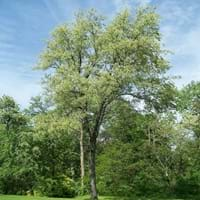Life Span
Biennial
Perennial
Origin
Texas
North America, United States, Northeastern United States, Mid-Atlantic United States, Southeastern United States, North-Central United States, South-Central United States, Texas, Canada, Central America
Types
Not available
Not Available
Habitat
Forests, meadows, Pastures, Prairies, savannahs, Woodland edges
Canyons, Dry areas, fencerows, Floodplains, Moist Soils, Old fields, open Woodlands, riparian zones, Roadsides, Thickets, Woodlands
USDA Hardiness Zone
8-10
3-9
Sunset Zone
H1, 8, 9, 12, 13, 14, 15, 16, 17, 18, 19, 20, 21, 22, 23, 24
Not Available
Habit
Upright/Erect
Oval or Rounded
Flower Color
White, Lemon yellow, Light Pink
White
Flower Color Modifier
Bicolor
Bicolor
Fruit Color
Tan
Dark Red, Dark Blue, Black
Leaf Color in Spring
Green
Green
Leaf Color in Summer
Green
Green, Dark Green
Leaf Color in Fall
Not Available
Yellow, Orange
Leaf Color in Winter
Light Green
Not Available
Leaf Shape
Alternate
Oblanceolate , Ovate
Plant Season
Spring, Summer
Spring, Summer, Fall
Sunlight
Full Sun, Partial Sun
Full Sun, Partial Sun
Type of Soil
Loam, Sand
Clay, Loam, Sand
The pH of Soil
Neutral, Alkaline
Acidic, Neutral
Soil Drainage
Well drained
Average
Bloom Time
Early Spring, Spring, Late Spring, Early Summer, Late Winter
Spring, Late Spring
Tolerances
Drought
Drought, Salt
Where to Plant?
Container, Ground, Pot
Ground
How to Plant?
Seedlings
Root Division, Rooted stem cutting, Seedlings, Stem Cutting
Plant Maintenance
Medium
Medium
Watering Requirements
Average Water Needs, Do Not over Water, Keep the Soil well drained, Requires regular watering
Average Water Needs
In Summer
Lots of watering
Lots of watering
In Spring
Moderate
Moderate
In Winter
Average Water
Average Water
Soil pH
Neutral, Alkaline
Acidic, Neutral
Soil Type
Loam, Sand
Clay, Loam, Sand
Soil Drainage Capacity
Well drained
Average
Sun Exposure
Full Sun, Partial Sun
Full Sun, Partial Sun
Pruning
Remove damaged leaves, Remove dead branches, Remove dead leaves
Remove damaged leaves, Remove dead branches, Remove dead leaves
Fertilizers
All-Purpose Liquid Fertilizer
All-Purpose Liquid Fertilizer
Pests and Diseases
Pests and diseases free, Red blotch
Red blotch
Plant Tolerance
Drought
Drought
Flower Petal Number
Single
Single
Foliage Texture
Medium
Medium
Foliage Sheen
Matte
Glossy
Attracts
Bugs, Butterflies, Insects
Birds, Butterflies
Allergy
Abdominal pain, Anxiety, Inflammation, Low blood pressure
coma, dilation of pupils, Gastric, Respiratory problems, weakness
Aesthetic Uses
Beautification, Decorating walls, Hanging Basket, Showy Purposes, Used as an interior landscaping species, Used for decorating walls, fences, gates, hedges, etc.
Showy Purposes
Beauty Benefits
Skin irritation, Skin Problems
Not Available
Environmental Uses
Air purification
Air purification, Nesting sites for birds, Shadow Tree, Shelter for wildlife, Wildlife
Medicinal Uses
Eczema, Menstrual Cramps, Menstrual Disorders
Cough, Sedative, Tonic
Part of Plant Used
Flowers, Root, Seeds, Stem
Fruits
Other Uses
Beneficial species for attracting pollinators, deer resistant, Edible seed
Used As Food, Used as Ornamental plant
Used As Indoor Plant
Yes
No
Used As Outdoor Plant
Yes
Yes
Garden Design
Mixed Border, Rock Garden, Wall, Wildflower
Edible, Feature Plant, Shade Trees
Botanical Name
OENOTHERA mexicana
PRUNUS serotina
Common Name
pinkladies, pink evening primrose, showy evening primrose, Mexican primrose, and amapola.
Black Cherry
In Hindi
Mexican primrose
ब्लैक चेरी का पेड़
In German
Rosa Nachtkerze
Schwarz Kirschbaum
In French
Mexican primrose
Noir Cherry Tree
In Spanish
Primrose mexicana
Negro del cerezo
In Greek
Μεξικού Primrose
Μαύρο Cherry Tree
In Portuguese
Mexican Primrose
Árvore de cereja preta
In Polish
Mexican Primrose
Czarny Cherry Tree
In Latin
Mexicanus Primrose
Prunus serotina ligno
Phylum
Tracheophyta
Magnoliophyta
Class
Magnoliopsida
Magnoliopsida
Family
Onagraceae
Rosaceae
Clade
Angiosperms, Eudicots, Rosids
Angiosperms, Eudicots, Rosids
Tribe
Onagreae
Not Available
Subfamily
Onagroideae
Prunoideae
Number of Species
Not Available
Season and Care of Mexican primrose and Black Cherry
Season and care of Mexican primrose and Black Cherry is important to know. While considering everything about Mexican primrose and Black Cherry Care, growing season is an essential factor. Mexican primrose season is Spring and Summer and Black Cherry season is Spring and Summer. The type of soil for Mexican primrose is Loam, Sand and for Black Cherry is Clay, Loam, Sand while the PH of soil for Mexican primrose is Neutral, Alkaline and for Black Cherry is Acidic, Neutral.
Mexican primrose and Black Cherry Physical Information
Mexican primrose and Black Cherry physical information is very important for comparison. Mexican primrose height is 15.20 cm and width 25.40 cm whereas Black Cherry height is 2,438.40 cm and width 914.40 cm. The color specification of Mexican primrose and Black Cherry are as follows:
Mexican primrose flower color: White, Lemon yellow and Light Pink
Mexican primrose leaf color: Green
Black Cherry flower color: White
- Black Cherry leaf color: Green
Care of Mexican primrose and Black Cherry
Care of Mexican primrose and Black Cherry include pruning, fertilizers, watering etc. Mexican primrose pruning is done Remove damaged leaves, Remove dead branches and Remove dead leaves and Black Cherry pruning is done Remove damaged leaves, Remove dead branches and Remove dead leaves. In summer Mexican primrose needs Lots of watering and in winter, it needs Average Water. Whereas, in summer Black Cherry needs Lots of watering and in winter, it needs Average Water.





